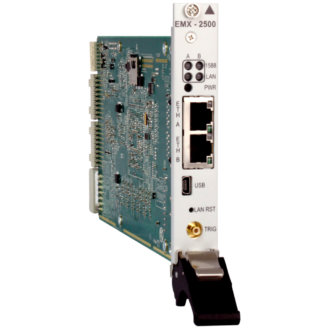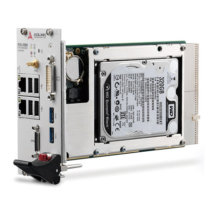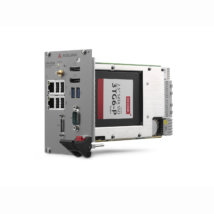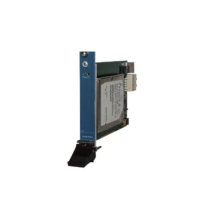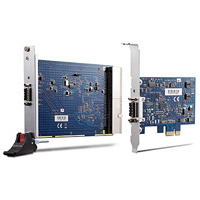The EMX-2500 is the industry’s first gigabit Ethernet LXI based PXI Express interface. This combines Ethernet’s widespread usage and robust architecture with instrumentation-specific functionality, such as wired trigger bus and IEEE-1588-2008 synchronization, and extends it for use in PXI Express mainframes, making it an ideal solution for data acquisition applications.
SIMPLIFIED INSTRUMENT DISCOVERY AND USAGE
When a mainframe with the EMX-2500 is connected to a local network, the EMX-2500 automatically assigns an IP address to the mainframe, allowing the chassis and the plugin cards to be accessed easily with the IP address. Any internet enabled device connected the local network can act as a host including desktops, laptops, tablets, and smart phones.
PRECISION TIMING AND SYNCHRONIZATION
The EMX-2500 contains a high-precision IEEE-1588 source for timestamping data and synchronizing modules within 100ns accuracy.
HIGH DATA TRANSFER RATES – UP TO 100 MB/S SUSTAINED THROUGHPUT
The EMX-2500 uses gigabit Ethernet to achieve up to 100 MB/s sustained data transfer rate from the PXI Express mainframe.
MULTIPLE MAINFRAMES, COMMON HOST
Unlike traditional embedded host controllers, the EMX-2500 allows multiple mainframes to be controlled by a common host. This allows for cost savings by reducing the number hosts and facilitates scalability by allowing software for all mainframes to be installed, run and configured on a single machine. Scaling up or down requires interfacing with a single machine.

